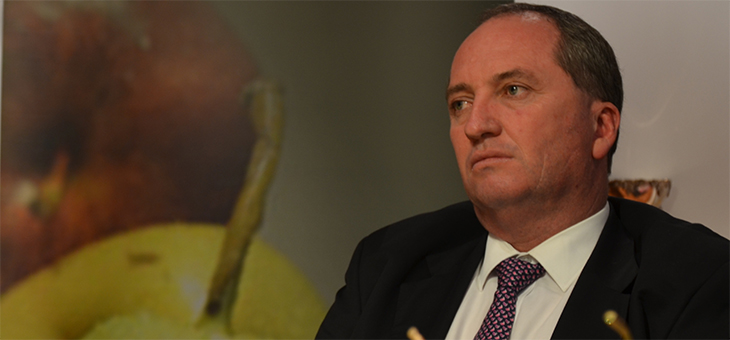An increasing number of older Australians are reliant on JobSeeker payments.
At least 10 Coalition MPs want to cut the JobSeeker supplement next year, but most would like to see some sort of increase to the welfare payment.
Barnaby Joyce said the old rate was too low, but the coronavirus supplement currently being paid is unsustainable.
“It still needs to be increased but we now have a massive debt,” Mr Joyce told The Sydney Morning Herald.
“The generosity possible pre-COVID will not be possible now.
“Returning to $280 a week would be fairly cruel and [an] unusual punishment,” said member for Cowper in NSW Pat Conaghan.
This could be good news for the increasing number of older Australians reliant on the payment.
As YourLifeChoices reported earlier this month, the most recent Parliamentary Budget Office (PBO) report revealed that the typical ‘welfare’ recipient is now aged 55 or older.
An increasing number of those older Australians relying on the payments are women aged over 60, who are also staying on the payment for longer, because they have been moved from partner payments to JobSeeker payments, but also due to the increase in the Age Pension qualifying age.
New research shows increasing unemployment benefits by $200 a fortnight would cost $7 billion a year.
Prior to the pandemic, the JobSeeker payment equated to $40 a day.
The federal government is expected to end the $250-a-fortnight coronavirus supplement currently being paid to about 1.4 million recipients by the middle of next year.
This is a reduction from the $550-a-fortnight paid on top of the base rate of $565.70 for singles ($1115.70 total) at the peak of the pandemic.
While Coalition MPs believe the current payment rate discourages recipients from finding a job, most say the dole should not return to its pre-pandemic level.
The government must balance the need for temporary support for the unemployed and incentivising people to take up work when it becomes available, says Social Services Minister Anne Ruston.
To that end, recipients can now earn up to $300 per fortnight before it affects their payment.
“This means people on JobSeeker can work about two days a fortnight at minimum wage without losing a single cent of their social security cheque,” said Ms Ruston.
The Business Council of Australia says the JobSeeker base rate should be between 75 per cent and 90 per cent of the Age Pension rate, which is $860.60 a fortnight for a single.
The unemployment benefit rate was around 60 per cent of the Age Pension.
Increasing the JobSeeker rate to 80 per cent of the Age Pension would give single recipients $688.50 a fortnight, up from pre-pandemic rates of $565.70 per fortnight, says Bankwest Curtin Economics Centre modelling.
This would cost around $3.87 billion a year to support the 1.4 million people currently unemployed, but could come down to around $2.57 billion should the jobless figure come down to 1 million.
Even at this payment rate and with maximum rent assistance and supplements, “recipients [would still be living] substantially below the current Australian poverty line”, say Curtin researchers, who calculate the poverty line at $950-a-fortnight for a single person.
They say JobSeeker should be paid at 90 per cent of the Age Pension, to bring recipients just under the poverty line.
This would take payments to $774.50 a fortnight and would cost around $6.96 billion a year at the current rate of unemployment or $4.71 billion if the job market recovered.
Labor, the Greens, social welfare groups and many economists endorse a permanent increase to the base rate.
Member for Victoria’s Mallee, Anne Webster, says no “amount of welfare payment is enough … but it’s not supposed to be, it’s supposed to stimulate people to apply for jobs”.
While 78 per cent of those surveyed in our Age Pension or increase Newstart: which one should be a priority? flash poll back in 2018 said that the JobSeeker base rate should be increased.
Almost nine in 10 (87 per cent) said they could not live on $40 per day.
“Newstart seems cruel for people who cannot find a job and have tried with no success,” wrote YourLifeChoices member Paddington.
“Maybe age of unemployed is relevant as older ones would be in more distress than a teenager or very young one who can stay home with mum and dad. One size may not fit all.
“Some older workers who are unemployed are in limbo and using up their savings and super in their 50s and 60s. An employer does not have to state that age is an impediment to getting the job, they simply don’t choose an older person.
“Single pensioners who are renting seem to be struggling, so again, individual circumstances need to be considered for elderly people.
“We can never judge why people are in financial distress as individual circumstances are so different.”
What do you think? Would you like to see an increase to JobSeeker base rates?
If you enjoy our content, don’t keep it to yourself. Share our free eNews with your friends and encourage them to sign up.
Related articles:
https://www.yourlifechoices.com.au/health/covid19/covid19-adding-to-retirement-insecurity
https://www.yourlifechoices.com.au/health/covid19/pension-reliance-grows-super-war-rages
https://www.yourlifechoices.com.au/health/covid19/pandemic-hits-older-australians-hardest

